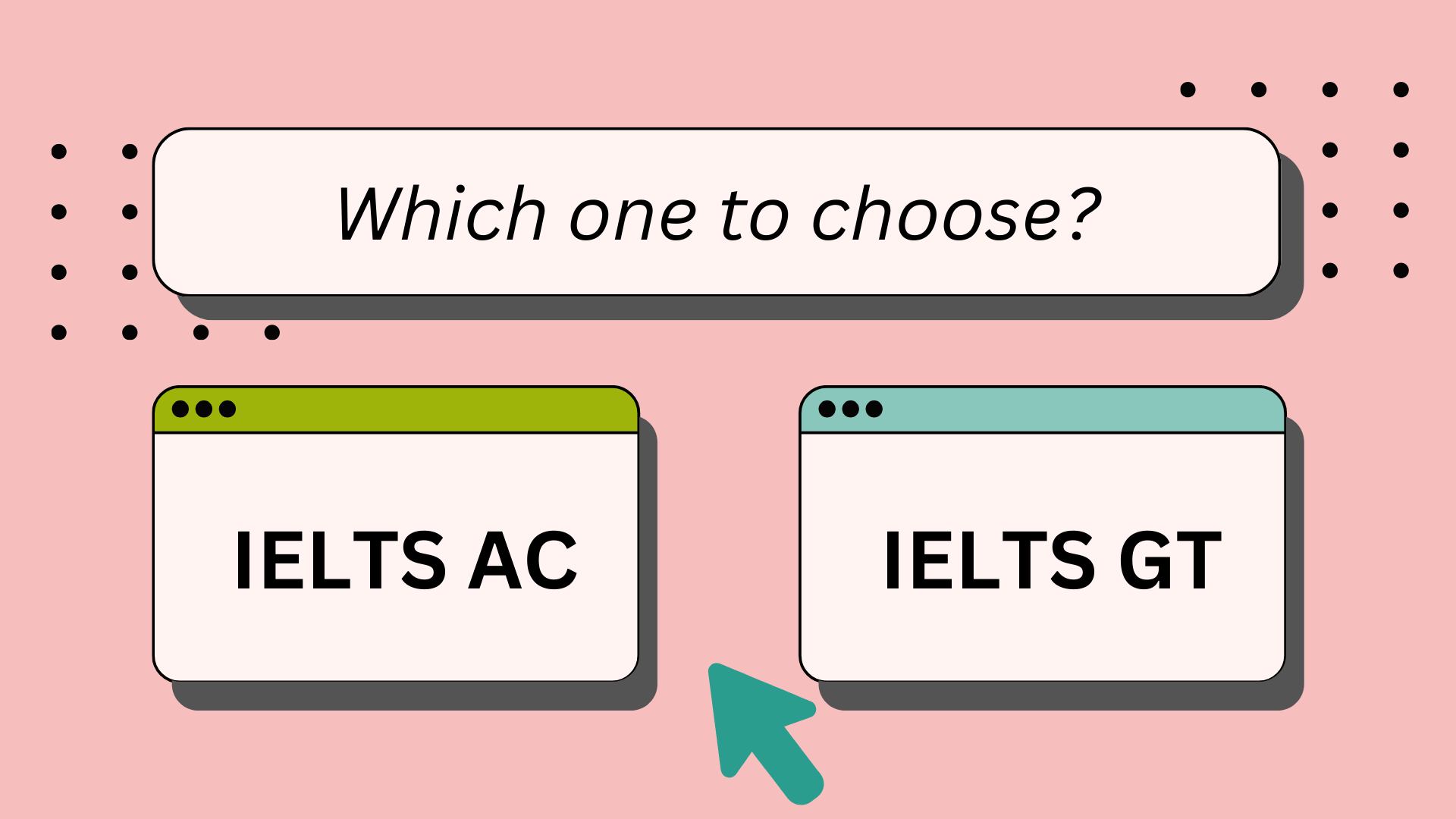Are you also wondering about IELTS Academic vs. IELTS General Training differences?
It happens…
Understanding the test format is crucial if you plan to take the IELTS. Not only do you need to choose between IELTS Academic and IELTS General Training, but you also need to decide between the paper-based and computer-delivered test formats.
Here’s a detailed guide to help you make informed decisions.
IELTS Academic vs. IELTS General Training
IELTS Academic and General Training evaluate your English proficiency but cater to different purposes. Here’s a quick comparison:
| Aspect | IELTS Academic | IELTS General Training |
|---|---|---|
| Purpose | For university education or professional registration. | For immigration, work, or vocational training. |
| Reading Section | Complex academic passages (e.g., science, education). | Simpler texts like ads, workplace notices, and magazines. |
| Writing Section | – Task 1: Describe a graph or chart.- Task 2: Write a formal essay. | – Task 1: Write a formal or informal letter.- Task 2: Write an essay on everyday topics. |
| Listening & Speaking | It’s the same for both formats. | It’s the same for both formats. |
| Example Use | Applying for a Master’s degree or professional license. | Applying for Canadian PR or a New Zealand work visa. |
Paper-Based vs. Computer-Delivered IELTS
Now that you know which test type to take (Academic or GT), let’s explore the difference between the paper-based and computer-delivered formats.
| Aspect | Paper-Based IELTS | Computer-Delivered IELTS |
|---|---|---|
| Test Format | Take the test on paper with a pencil. | Take the test on a computer at a test centre. |
| Listening Section | Answers are written on a separate answer sheet. | Answers are typed directly into the system. |
| Reading Section | Underline or annotate on the question paper. | Use on-screen tools to highlight or take notes. |
| Writing Section | Write essays by hand. | Type essays on the computer using a keyboard. |
| Speaking Section | Face-to-face with an examiner. | It is the same as paper-based (in-person). |
| Test Duration | It’s the same for both formats (2 hours 45 minutes). | It’s the same for both formats. |
| Result Time | 13 days to get results. | 3–5 days to get results (faster results). |
| Who Should Take It? | Suitable for those comfortable with writing by hand. | Suitable for those who type faster than they write. |
Key Considerations
- Comfort Level
- If you’re used to typing and working on computers, go for the computer-delivered IELTS.
- If you prefer writing by hand or feel more comfortable with traditional methods, choose the paper-based IELTS.
- Result Turnaround Time
- Need quick results? Opt for computer-delivered IELTS (results in 3–5 days).
- Availability
- Paper-based tests are conducted less frequently compared to computer-delivered tests.
- Computer-delivered tests often have more flexibility in dates and time slots.
- Highlighting Tools
- On the computer, you can highlight text and make quick notes digitally. In the paper format, you can underline directly on the paper.
Final Tips for Choosing Your IELTS Format
- For Academic or Professional Use: Choose IELTS Academic.
- For Immigration or Work: Choose IELTS General Training.
- For Faster Results or Digital Comfort: Go with computer-delivered IELTS.
- For Traditional Testing or Handwriting Comfort: Choose paper-based IELTS.
Still unsure? Contact us for personalized guidance, coaching, and support to ace your IELTS test!
Or…
You can visit the official IELTS website to get all the necessary information.
Remember…
Choosing the right IELTS type and format is your first step toward success. Make the right choice and start preparing today!
We have been actively helping students achieve their desired bands on the first attempt. We offer both offline and online coaching, and our videos are designed to help you in the best way possible.
Now, if you want to book the exam, we have a step-by-step guide.
Nonetheless, we have also uploaded all the official Cambridge modules to practice for free. Click here
Voxcel aims to impart not only world-class IELTS coaching but also we look forward to develop the overall personality of our students.

